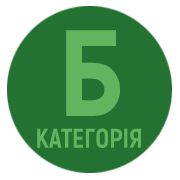ДОСЛІДЖЕННЯ ВПЛИВУ ВОДОКОРИСТУВАННЯ ЕЛЕКТРОСТАНЦІЇ НА ГІДРОЛОГІЧНИЙ РЕЖИМ РІЧКИ (НА ПРИКЛАДІ РІЧКИ СТИР)
DOI:
https://doi.org/10.32782/naturalspu/2024.1.9Ключові слова:
гідрологічний режим та показники, водний скид, система охолодження, екологічний стан, антропогенне навантаження.Анотація
Метою роботи було дослідження гідрологічного режиму річки Стир у зоні впливу водокористування Рівненської атомної електростанції (РАЕС) з виявленням визначальних чинників і їхнього взаємозв’язку. Для оцінки змін гідрологічних показників річки Стир у зоні водозабору та скиду води Рівненської атомної електростанції використано підхід, заснований на аналізі діапазону варіабельності (RVA). Виявлені закономірності та проведений аналіз динаміки водокористування Рівненської атомної електростанції свідчать про збільшення витрат на водоспоживання в теплу пору року, що пов’язано з вищою температурою навколишнього середовища і, відповідно, більшим випаровуванням води із системи охолодження. Виявлено позитивний значущий (p < 0,0001) на рівні сильного (r = 0,7–0,9; R-sq = 0,9869) кореляційний зв’язок режиму забору та скидання води Рівненської атомної електростанції з температурою води в річці. Новизна роботи полягає в порівнянні фактичних витрат води річки Стир у зоні водокористування Рівненської атомної електростанції з даними нормалізованого індексу різниці води (NDWI), отриманого за допомогою зображення ділянки річки Стир супутника Sentinel-2. Практична значущість дослідження полягає в тому, що отримані результати можуть бути використані для планування та впровадження стратегій управління водними ресурсами, що орієнтовані на збереження якості поверхневих вод. Представлений підхід до контролю джерела забруднення передбачає мінімізацію їхнього впливу на водойму та може бути використаний для оцінки нерадіаційного впливу скидів атомних електростанцій. Результати дослідження свідчать про відсутність впливу скидів з Рівненської атомної електростанції, отже, не потребують оптимізаційних заходів, оскільки гідроекологічні показники та зміна їхніх значень не впливають на екологічний стан поверхневих вод річки Стир і не перешкоджають досягненню цілей Водної рамкової директиви.
Посилання
European Parliament. Council of the European Union European Commission Council. Directive 2000/60/EC of the European Parliament and of the Council of 23 October 2000 Establishing a Framework for Community Action in the Field of Water Policy. Off. J. Eur. Communities. 2000. L327, 1–72.
Інформація Державного агентства водних ресурсів України. URL: https://davr.gov.ua/ rg (дата звернення: 09.01.2024).
European Environment Agency. European Waters – Assessment of Status and Pressures 2018. № 7/2018 ; Publications Office of the European Union. Luxembourg, 2018. ISBN 978-92-9213-947-6.
European Commission. WFD Reporting Guidance 2022. Final Draft v 6.2 ; European Commission. Helsinki, Finland, 2023. URL: https://cdr.eionet.europa.eu/help/WFD/WFD_715_2022/Guidance%20documents/WFD%20Descriptive%20Reporting%20Guidance.pdf (дата звернення: 09.01.2024).
Hydrological Regime Alteration Assessment in the Context of WFD 2000/60: A European and Global Review / A. Mentzafou et al. Sustainability. 2023. № 15. 15704 p. https://doi.org/10.3390/su152215704.
How much water does a river need? / B. Richter et al. Freshwater Biology. 1997. № 37. P. 231–249. https://doi.org/10.1046/j.1365 2427.1997.00153.x.
ESA. URL: https://www.esa.int/ (дата звернення: 09.01.2024).
Mcfeeters S. K. The use of the normalized difference water index (NDWI) in the delineation of open water features. Int. J. Remote Sens. 1996. № 17. P. 1425–1432.
Kuznietsov P., Biedunkova O. Study of Сhanges in Acid-Alkaline Balance of Cooling Water Сirculating System of Power Plants during Water Treatment by Liming According to Stabilization Treatment Method. 4’th International Scientific Conference Chemical Technology and Engineering: Proceedings, June 26–29’th. 2023. Lviv, Ukraine. P. 239–241. https://doi.org/10.23939/cte2023.239.
Kuznetsov P.N., Tichomirov A.U. Water-chemistry operating condition of the second circuit power units № № 1–4 Rivne NPP with ethanolamines corrective treatment. Probl. At. Sci. Technol. 2017. № 2–108. P. 109–113.
Report on activity 1. Analysis of water regime, occurrence of floods and their consequences in the basin of the river Styr. “Monitoring and forecasting of floods in the Pripyat basin”. Nauka radi mira I bezopasnosti. Proekt NATO 983516. URL: https://uhmi.org.ua/project/nato/FINAL_REPORT_Activity_1.doc (дата звернення: 09.01.2024).
Бєдункова О.О., Кузнєцов П.М. Формування карбонатної системи оборотної охолоджуючої води атомної електростанції та вплив на pH поверхневих вод при зворотних скидах. Екологічні науки. 2023. Т. 3. № 48. С. 163–168. https://doi.org/10.32846/2306-9716/2023.eco.3-48.26.
Кузнєцов П.М., Бєдункова О.О. Порівняльний гідробіологічний моніторинг вод систем технічного водопостачання атомних електростанцій. Водні біоресурси та аквакультура. 2022. Т. 2. № 12. С. 180–190. https://doi.org/10.32851/wba.2022.2.13.
Дозвіл на спецводокористування ПС Рівненської АЕС № 53/РВ/49д-20 2020. URL: https://e-services.davr.gov.ua (дата звернення: 09.01.2024).
Звіт за темою «Гідравлічні дослідження водозабору Рівненської АЕС на р. Стир». Київ, 1994. 47 с.
Бєдункова О.О., Кузнєцов П.М. Факторний аналіз динаміки азотних речовин води річки Стир у зоні впливу Рівненської АЕС. Вісник Національного університету водного господарства та природокористування. 2023. Т. 1. № 101. С. 3–17. https://doi.org/10.31713/vs120231.
Bussi G., Whitehead P.G. Impacts of droughts on low flows and water quality near power stations. Hydrological Sciences Journal. 2020. № 65: 6. P. 898–913. https://doi.org/10.1080/02626667.2020.1724295.
Бєдункова О.О., Кузнєцов П. М. Методологія застосування корекційної обробки біоцидами систем технічного водопостачання електростанцій. Вісник Національного університету водного господарства та природокористування. 2023. Т. 2. № 102. С. 3–15. https://doi.org/10.31713/vs220231.







